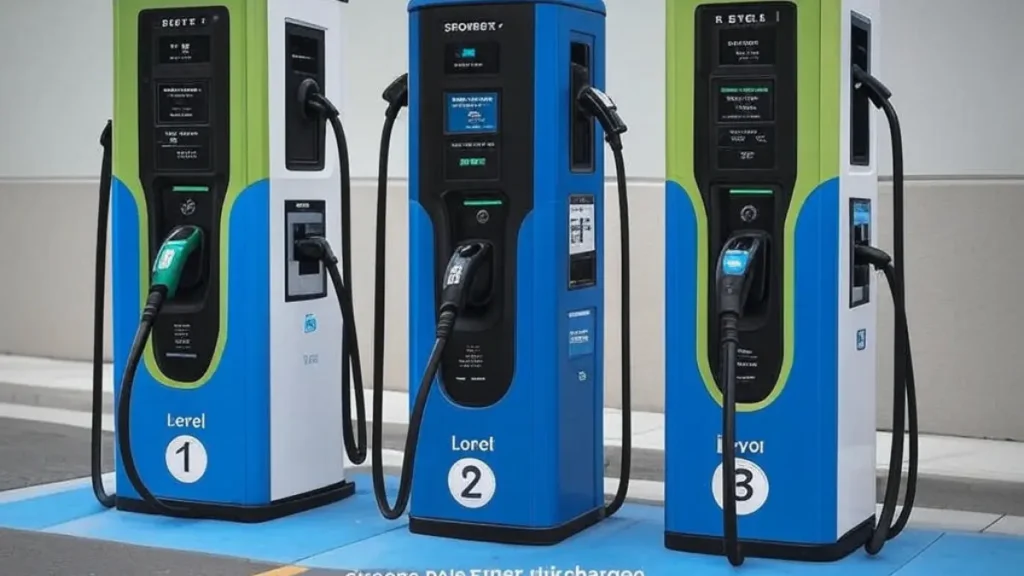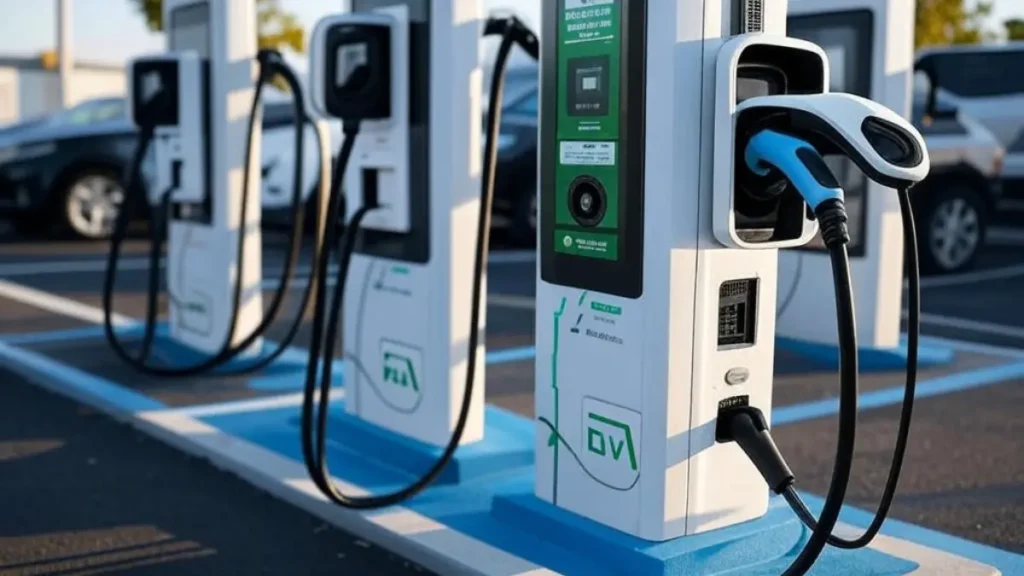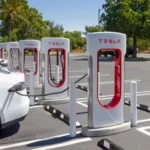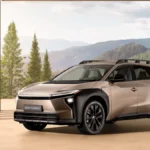Today the whole world is troubled by the rising prices of petrol and diesel and increasing pollution. At such a time, the arrival of electric vehicles (EVs) has come as a relief news for the people. Although the use of EV is gradually increasing, many people are thinking before buying it. The biggest reason for this is the lack of easy and reliable charging stations everywhere.
Apart from this, there are many things due to which people are hesitant to buy an electric car, such as – are there fast charging stations in our city or highway? Will the battery last long? How long will it take to charge? How will the speed of the EV be? All these things play an important role in making a decision.
As in the electric car buying guide, we have explained every important point in detail before buying an electric car, similarly in today’s blog we will specifically talk about “Fast Charging EV Stations“. You will know what fast charging technology, how it works, what are its benefits, and in which places in India and America this facility is available. Hopefully after reading this guide, many of your doubts related to EV will be cleared and it will help you in making the right decision.
Types of Fast Charging EV Stations

1. Level 1 Charging Station
Level 1 charging is often called “standard charging” because it is the easiest and most common way to charge electric vehicles. It uses the same 120 volt electricity that is used to run common appliances like fans, TVs or mobile chargers in our homes. The power of this charging is about 1.4 kilowatts, and it can give your vehicle a range of 5 to 8 kilometers per hour.
Although this charging is slow, its biggest advantage is that it does not require any special charger or installation to use it. You can easily charge your EV overnight by plugging it directly into a normal socket at home. This method is very beneficial for those who travel short distances daily, such as going to office, dropping children to school or going to the local market.
Simply put, if you have more time and use your vehicle for light tasks, then Level 1 charging is a cheap, easy and convenient option.
2. Level 2 Charging Station
Level 2 chargers are many times faster than Level 1 chargers. It uses 240 volts of AC power and can deliver power ranging from 3 kW to 19 kW. With its help, your electric car can be charged enough to run about 20 to 100 kilometers in an hour. This charger can be easily installed at home, office or public places like malls.
To use Level 2 charger, a separate charging device is required, which you can also get installed in your home. This is the same charger that is usually installed in office parking, supermarkets or shopping malls. Its biggest feature is that it makes charging fast, reliable and convenient, especially for those who use their EV daily.
If you want a charging system that charges your car quickly, saves time and is also economical in the long run, Level 2 charging is a smart and practical option.
3. DC Fast Charging Or Level 3 Charging Station
DC fast charging is a technology that charges electric vehicles very fast. It works on power ranging from 50 kW to 350 kW, which can charge your EV enough to run for about 320 kilometers (200 miles) in just 30 minutes. Its special feature is that it has been designed keeping in mind long distance travelers.
You usually find such charging stations near highways, traffic points in big cities, malls or large shopping centers, so that you can charge your vehicle comfortably on the way.
DC charging is many times faster than traditional AC charging. This is a new and advanced technology, which helps to charge modern electric cars quickly. This not only saves your time, but also makes long distance journeys easier.
4. Ultra-Fast Charging Technologies
Ultra-fast charging is a very fast and modern technology, which can charge an electric car up to 80% in just 15 to 20 minutes. It has a power of 400 kilowatts or more, which makes it many times faster than traditional charging methods.
This technology has special cooling systems and smart battery control systems, which prevent the battery from overheating during charging and keep its life good for a long time.
Today many large charging networks like Tesla Supercharger V3, Ionity and Electrify America Hyper-Fast are using this technology. These networks provide fast charging on highways and major locations, making long distance travel by electric car easy and reliable.
If you want to buy an EV that charges quickly and lasts long, then a car with ultra-fast charging can be the best option for you. This technology not only saves time, but also makes electric vehicles a strong basis for future travel.
How DC Fast Charging Works
Fast charging uses direct current (DC), which goes directly to your electric car’s battery. In this, the charger installed inside the car is bypassed, due to which the battery charges very fast.
The car battery has a special system called Battery Management System (BMS). This system monitors everything during charging such as the battery does not overheat, all battery cells are charged equally and charging is done in a safe manner.
Fast charging is completely safe and has been designed keeping modern electric vehicles in mind. However, if you use fast charging very often, then after years the battery capacity may decrease slightly. But this effect is gradual and most EV users do not have any major problem with it.
Key Components of Fast Charging EV Stations
Fast charging stations are very important for electric vehicles (EVs). These stations charge our vehicles in just a few minutes, making driving an EV easy and reliable. These are installed in public places so that people can charge their vehicles even while traveling.
But have you ever wondered what machines and technologies are installed inside these charging stations that charge the battery so quickly?
Let’s know about some important parts (components) of a fast charging station that make it so powerful and fast.
1. Connectors and charging standards
When you put your car on a charging station for charging, the first thing that gets connected is the charging connector. At present, some major charging standards are being used in the world, which are suitable for different cars:
- CCS (Combined Charging System): This charging standard is most used in Europe and America and almost all new electric cars support it.
- CHAdeMO: This standard was developed in Japan and is especially suitable for cars from companies like Nissan.
- Tesla Supercharger: This is a special and fast charging system designed only for Tesla cars, which charges very quickly.
2. Power Electronics
When we talk about fast charging, it requires more power to carry out the process quickly and effectively. For this, high-quality inverter and controller systems are used. Inverters work to convert AC electricity to DC, and the controller system ensures that the battery is charged properly, which also maintains the life of the battery.
Due to the highest conversion of power in fast charging, this process takes place much faster than normal charging. Therefore, it is very beneficial especially for electric vehicle owners who travel long distances.
The main purpose of this technology is to save time and make the charging of electric vehicles faster and more convenient, so that there is no interruption during the journey and the vehicle can be ready quickly.
With the help of this process, charging stations play a vital role so that electric vehicles can be charged properly and quickly.
3. Cooling System
When we charge our electric vehicle fast, a large amount of electricity goes into the battery. This flow of electricity generates heat in the battery. If this heat is not controlled properly, it can damage the battery and the charging system. Therefore, modern charging stations use cooling systems that help in reducing this heat properly.
There are mainly two types of technologies in cooling systems—liquid cooling and air-cooling fans. In liquid cooling systems, a special type of liquid (water or other liquid) is used, which passes near the battery and removes the heat. In this process, a coolant (liquid) is used to keep the system cool, which prevents high temperatures. The second technology is an air-cooling fan, which cools the charging system with air. These fans keep the battery and charging system cool by increasing the air speed.
The main purpose of these cooling systems is to ensure that the battery does not overheat during charging, thereby maintaining its life and efficiency. This technology not only keeps the battery safe but also helps the charging station to run smoothly for a long time.
Factors Affecting Charging Speed
Not only the range of the battery, but its charging speed is also very important in an electric car. Many people think that by installing a fast charger, every EV will charge quickly, but the reality is slightly different. Some technical and external factors affect the charging speed, which is important for you to know.
- First of all, it is important to understand that not all electric cars support high-power fast chargers. Some cars can only be charged with Level 1 or Level 2 chargers, which take more time.
- In addition, EVs with larger batteries take longer to fully charge, even if the charger is fast. Therefore, the charging time can be accurately estimated only by understanding the battery capacity.
- Battery chemistry slows down in cold weather, which also affects the charging speed. EVs can charge a little slower in winter, and this is why you should plan charging according to the weather.
- After all, when the battery is completely empty, the charging speed is faster. But as the battery starts charging, the speed gradually decreases. This is to protect the battery so that it can have a longer life.
So, it will be beneficial for you to understand all these factors that affect the charging speed and deal with them properly.
Costs and Pricing Models
When you consider buying an electric car, it’s not just the cost of the car that matters, but also the cost of charging it. Charging stations nowadays charge differently – some charge you per unit (kWh), while others charge per session or per minute. This means that the more you charge, the more it will cost.
Charging station owners also face a number of costs, such as installation, maintenance, and upgrading the electric grid. This is why fast charging or charging stations in prime locations may charge more.
So, if you’re considering buying an electric vehicle, keep these costs in mind so that you can plan well and avoid any surprises in the future. This information will not only help you understand your costs, but will also give you an opportunity to know where and how to use charging stations that will be more economical.
Leading Fast Charging Networks and Providers
Fast charging networks and service providers for electric vehicles have become important for car owners these days. Some of the leading charging networks around the world are Tesla Supercharger, Ionity, EVgo, Electrify America, ChargePoint, and Blink Charging. These networks have thousands of charging stations that serve their users worldwide.
These networks offer fast charging, allowing you to fully charge your electric vehicle in less time. In addition, some local utility companies and municipalities are also providing charging facilities, which allow you to charge in more locations.
Some networks also offer subscription-based services, allowing car owners to avail charging facilities at better rates. Through these subscription services, you can easily manage your charging needs, and you get some additional benefits like discounts and priority.
All these networks and services together make the use of electric vehicles even more convenient, affordable and accessible. Due to this, choosing these networks is considered a smart and convenient option nowadays.
Benefits of Fast Charging EV Stations
If Fast Charging Stations are available in your city, then it can prove to be a great facility for you. With the help of fast charging stations, you do not have to worry about standing in long queues. The biggest feature of these stations is that they charge your EV quickly, saving you a lot of time.
Earlier, when drivers used to worry that their vehicle would run out of power mid-way, now Fast Charging Stations have solved this problem. Now even during long distance travel, you do not have to worry about the range. At these stations, you can make your vehicle operational again in just a few minutes.
This facility is especially beneficial for those who travel long distances in their electric vehicle. Whether you are going on a road trip or a long-distance journey, Fast Charging Stations provide you with quick and comfortable charging. This not only makes your journey easier, but also increases your awareness towards the environment as you are choosing a clean and sustainable option.
If you have a network of Fast Charging Stations, then long journeys can now become even more convenient and efficient.
Challenges and Considerations
With the increasing use of electric vehicles (EVs), some important challenges and considerations are emerging, which need to be addressed. The biggest challenge among these is the increasing pressure on the electricity grid. As the number of EVs increases, the demand for charging stations will also increase, which can be a big challenge for the grid. If this pressure is not handled properly, the overloading of charging stations can lead to increased charging time and congestion at the charging station.
Apart from this, another important issue is the need for a standard connector for electric vehicle charging stations. If every manufacturer uses different charging connectors, it can cause inconvenience to customers. Having a standard connector can simplify and facilitate the charging network, so that every type of EV can be easily charged on the same network.
Therefore, along with increasing the number of charging stations, it is also important to work towards making them smart and efficient. So that all electric vehicle owners can charge their vehicle anywhere and at any time without any hassle. Such improvements can further increase the use of EVs and will also help the environment.
The Future of Fast Charging
The charging infrastructure for electric vehicles is constantly improving, and will get even better in the future. With advancements in battery technology, fast charging will now be faster and safer, without damaging the battery. The biggest advantage of this is that car owners will now be able to fully charge their car in less time, making it possible to travel comfortably during long journeys.
In addition, the network of ultra-fast charging stations is growing rapidly on major highways and roads. Now, you don’t have to worry about stopping for long distances for charging during your journey. These stations are not only fast, but in many places they are also being run on renewable energy, such as solar power, which also benefits the environment.
With this change, charging will be faster for electric vehicle users, becoming another big attraction for car buyers. In this way, these improvements in the world of electric vehicles will not only make the future strong and sustainable, but will also make the travel experience more seamless and comfortable.
Conclusion
Fast charging technology is changing the way electric cars are driven. Over time, the number of charging stations is increasing, new and better technology is coming, and charging networks are getting stronger. These changes are making electric vehicles even easier to drive. Nowadays, you can see that the facilities of charging stations are increasing rapidly, especially around cities and highways, making even long journeys comfortable. Also, technologies like DC fast charging are now providing even faster charging, reducing the charging time for electric cars.
FAQs
1. What’s the difference between Level 2 and DC Fast Charging?
Ans: Level 2 uses AC power and is slower, suitable for home use. DC Fast Charging uses DC power for much faster charging at public stations.
2. Which cars support the fastest charging?
Ans: Most new EVs, including the Tesla Model 3, Hyundai IONIQ 5, Kia EV6, and Porsche Taycan, support high-speed DC fast charging.
3. Can any EV use a fast charger?
Ans: Only if the EV supports the correct connector and is compatible with DC fast charging.
4. Does fast charging harm my battery?
Ans: Not if used as intended, but frequent fast charging over time may cause some wear on the battery.
5. Can any EV use a fast charger?
Ans: Only if the EV supports the correct connector and is compatible with DC fast charging.
6. How long does it take to charge at a fast charger?
Ans: Most EVs reach about 80% charge in 20–40 minutes.
7. Does cold weather slow down charging?
Ans: Yes, cold temperatures can slow down the charging process for batteries.
8. Are fast chargers safe for weekly use?
Ans: Yes, they are designed to be safe and reliable for regular use.




Pingback: The Top Features of the MG Windsor EV Pro You Should Know